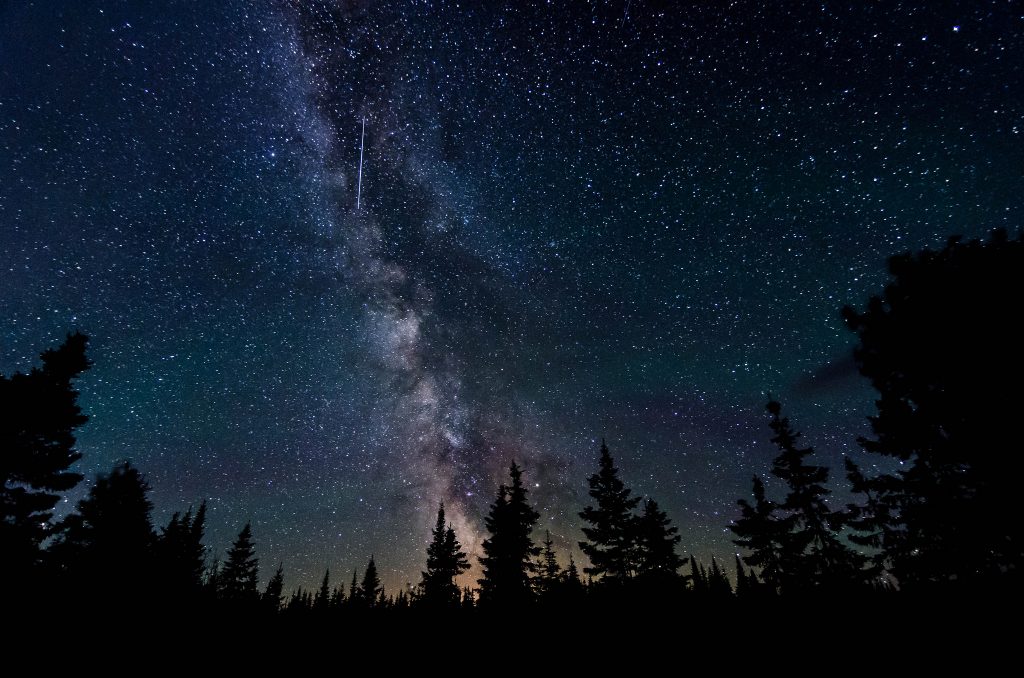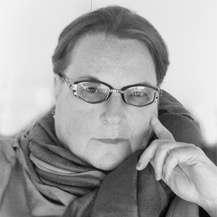From Inspiration to Creation
Tracing the evolution of an artistic creation can be a fascinating voyage of discovery. The genesis of choreographer Shannon Litzenberger’s new work, World After Dark, began in a dark sky preserve. That intriguing phrase, dark sky preserve, refers to terrain unpolluted by artificial light. In other words, when visiting a dark sky preserve, you can experience the natural glory of the night sky the way our ancestors did, before the advent of electricity.
Litzenberger did not know that Grasslands National Park in the southwest corner of Saskatchewan was the largest of Canada’s fourteen dark sky preserves. She had come to the badlands of Grasslands in 2014 on a research grant, to further explore the relationship between movement and landscape. It was during the creation of her dancetheatre piece HOMEbody: lessons in prairie living… (2010) that she first encountered the role that geography plays in identity. The work detailed the dislocation that Litzenberger had felt moving from a farm in rural Saskatchewan to big city Toronto when she was seventeen, to study dance at Ryerson. At Grasslands, however, her research and choreographic interest took a sharp turn in a new direction.
Explains Litzenberger: “I stayed in Val Marie, a town of 200, where they have special shades on their street lamps to direct the light downward to minimize pollution. Generally, we see the sky in layers. In a big city, we can pick out maybe six stars, the big ones like Polaris and the Big Dipper. In the countryside, we probably discern two or three more layers, like the larger constellations. In Grasslands, however, I saw fifty layers of stars–stars so far away as to be unimaginable–the sky was black and filled with billions of white dots. Growing up on a farm I had always been interested in the night sky, but after the Grasslands experience, the night sky became an obsession.”

World After Dark / Photo by Lyon Smith
Litzenberger had in her personal library, Acquainted with the Night: Excursions Through the World After Dark by Christopher Dewdney. This much acclaimed 2004 book had been a finalist for both the Governor General’s Awards and the Charles Taylor Prize for Non-Fiction. An adaptation of the book was made into a Gemini Award-winning feature documentary by Markham Street Films in 2010. Litzenberger had picked up the book because of her general interest in the subject matter. When she came back from Grasslands with her newly found fascination with night, she devoured the pages, and Dewdney became the second wellspring for her new choreographic adventure.
Dewdney is prize-winning poet and essayist who teaches creative writing and poetics at York University. Litzenberger found that she could really relate to Dewdney’s mix of science and poetry. “In my own choreography,” she says, “I combine research and discovery embodied in physical practice, with abstractions and metaphor.” Dewdney’s book has a fascinating structure. Twelve chapters are dedicated to each hour of the night, from six p.m. to five a.m. as they occur in Toronto, but without specific reference to a neighbourhood. Litzenberger thinks there are clues linking the book to Cabbagetown where she lives. Each hour has a specific theme, such as nocturnal creatures, dreams, astronomy, mythology or insomnia. The subjects that Dewdney touches on range from natural history to culture, from superstitions to psychology. Adds Litzenberger: “Each chapter contains incredible research, coupled with personal anecdotes, mini-essays and references to other poets like Goethe and Shakespeare. It’s like an encyclopedia of fact and poetry.”
When it came down to focusing her choreography on what she wanted to say about night, Litzenberger concentrated on metaphorical night as an icon of the feminine, particularly, humankind’s “break-up” with night. “In almost every culture,” she explains, “night is feminine: sensitive, intuitive, sensory. In our culture, the masculine–analytical, competitive, ambitious– represents the day. This isn’t about male and female, men and women. One is not better than the other. There are feminine and masculine qualities in us all. I’m not talking gender; I’m talking values. The “I” is masculine with its individual power. The “we” is feminine with its relationships. The world is out of balance because we have devalued the feminine, and therefore, we have disconnected from night. The world has become a toxic place because of the over-valuing of one over the other.”
Initially, Litzenberger used Dewdney’s episodic structure of the thematic hours to define her choreographic process. Words and images from the book generated movement material, for example. Ultimately, however, Litzenberger’s World After Dark found its own pathway. “While the piece captures the essence of the book,” she says, “and every hour is woven into the choreography in some way, time is experienced differently.”

World After Dark / Photo by Lyon Smith
The work is divided into two parts. The first section focuses on urban society and the night that we know and understand, our current relationship with night, and one in which we have forgotten about “her”. Society is manifested in a male dancer, Louis Laberge-Côté. The second part presents metaphorical night in all her mystery, the night that we do not know, with Linnea Swan as her personification. A third dancer, Kathia Wittenborn, transforms into the Luna Moth who bridges the two worlds, and leads us into metaphorical night. The rest of the cast, Syreeta Hector, Emily Law and Nikolaos Markakis, portray other characters in both worlds. “Night is not a singularity,” states Litzenberger. “There is a huge palette of moods and colours in the piece that includes beauty, and humour, and child-like energy, and things that go bump. We undertake quite a journey.”
Litzenberger views her choreography as an intersection between dance and theatre, and the spoken text comes from Dewdney’s book, selected, edited and arranged by famed Canadian playwright/director Guillermo Verdecchia, along with the latter’s original material. As an interesting side note, Litzenberger invited Dewdney to attend a run-through of World After Dark, and by coincidence, that rehearsal took place on the winter solstice, the longest night of the year. When asked by Litzenberger what he wanted the audience to know about the performance, Dewdney replied: “That night is not an absence, not a time-out, but a rich, enchanting world that can offer us so much more than we know.”
night is not an absence
Another key interdisciplinary aspect to the piece is illustrator Elysha Poirier’s projection and interactive video design. Responsive video uses an infrared light to track the dancers, which triggers the images at precise moments. Poirier’s visual concept includes maps of the universal order, vector drawings, shifting perspectives of space, hand-drawn animations, and images of Toronto at night including nightclubs and streetscapes. “As night falls,” says Litzenberger, “the city starts to light up, so the projections move into abstract shadows and Rorschach symbols that represent the psyche of the night.”
For Litzenberger, World After Dark is a story of reclamation. The trajectory of the male protagonist in the piece moves from a state of disconnect to a state of reconciliation. Says Litzenberger: “When we reconnect to night, we reconnect to the sensory world, to our bodies, to the natural environment. It is the notion of surrender. Night allows us to just be, and not focus on accomplishing or achieving. It is the opposite of day with its anxiety and stress. In World After Dark, we learn to remember night and what it means to us, and that makes us whole again.”









Comments